How Does GPT-3 Help to Generate Content in WordPress
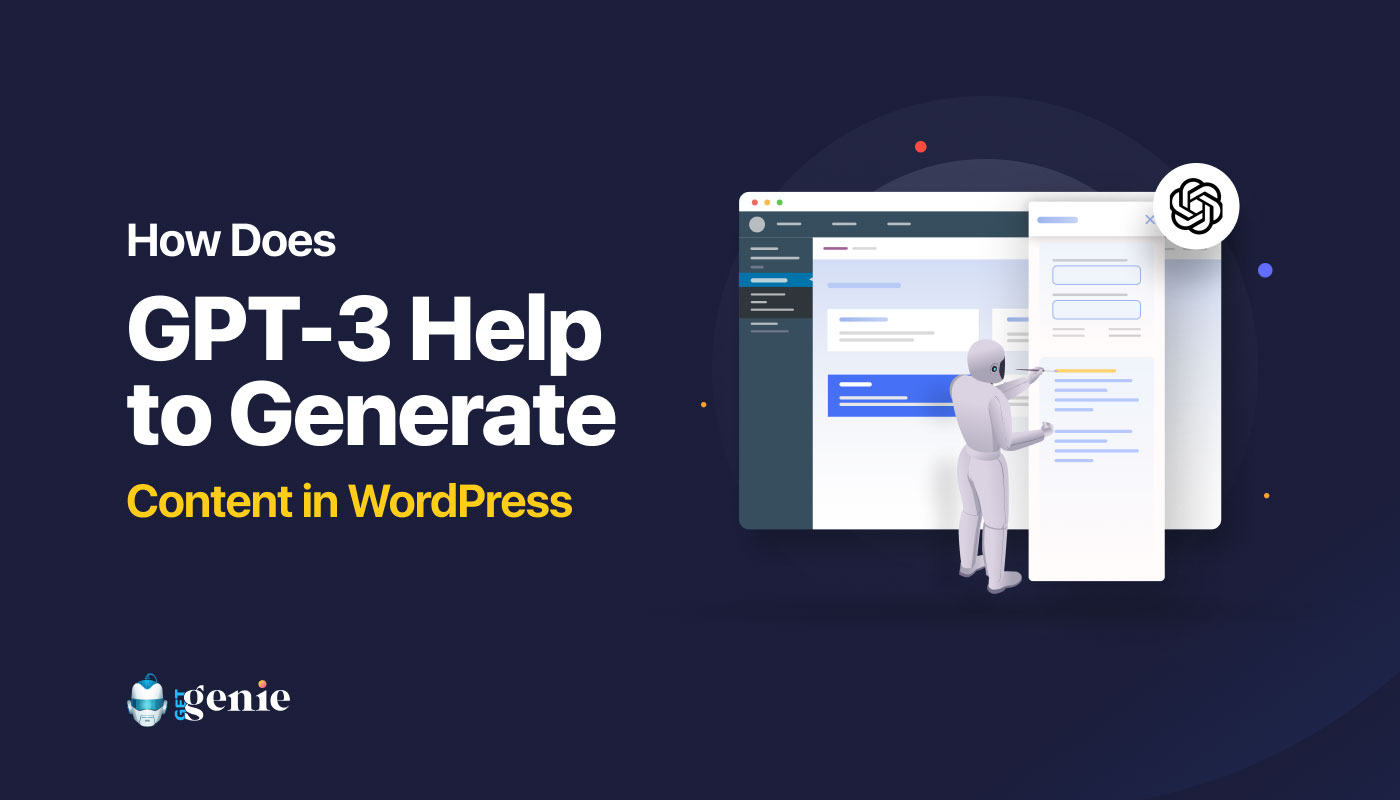
The third generation of Generative Pre-trained Transformer – GPT-3 is a language model developed by OpenAI.
Language models basically use the available data on the internet to generate new sets of text. Because a massive amount of datasets (around 4TBs) are used to train the GPT-3 model, outputs are precise and accurate.
Therefore, to this date, GPT-3 is one of the most used pre-trained transformer language models for AI text generators.
But for a CMS (Content Management System) that is used by most blogging sites, how does GTP-3 work with WordPress? And how can we utilize GPT-3 in WordPress to generate high-quality content?
What is GPT-3 and how it works?
- Full form: Generative Pre-trained Transformer – 3
- 3rd generation language model
- Generates a sequence of text for a given input
- Created using 175 billion parameters
- Trained with 45 TB of text data
- 10x times larger than other language models
In simple terms, the GPT-3 AI text generator produces a sequence of text for a given input using artificial intelligence. It is trained using deep learning with an enormous number of datasets so that it can generate human-like texts.
OpenAI’s GPT-3 language model can generate listicle blogs, question-answers, bullet points, summarized texts, blog sections, programming codes, and so on.
In terms of Machine Learning parameters and data used in training, GTP-3 is way ahead of the other language models. According to the creators, nearly 175 billion parameters are used to create the GPT-3 language model, while it’s trained with 45TB of text data.
Compared with other language models, Microsoft’s Turing NLG model uses 17 billion parameters, T5 uses 11 billion parameters, and GPT-2 uses around 1.5 billion parameters. That means parameters used in GPT-3 are 10x greater compared to even the nearest one, Turing NLG.
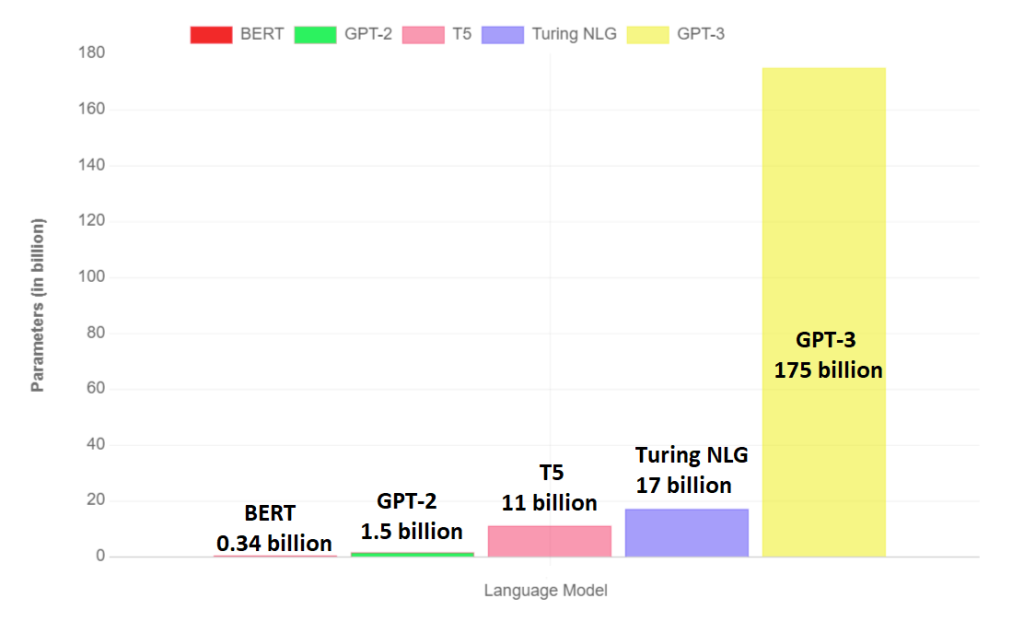
Now, why do these numbers even matter?
Pre-trained language models are trained on large data sets. The more data they get fed, the more accurately they can predict the text for the given output. Therefore the results are more precise with a large number of parameters.
Here is a list of datasets used to train GPT-3:

The “Weight in training mix” refers to the percentage of samples used to train GPT-3 from a dataset. Larger models such as GPT-3 are capable of dealing with a large batch size of data, however, the learning rate becomes quite low as they can sometimes run out of memory. To avoid such a situation, A combination of matrix multiply within each model parallelism and model parallelism across the layers of the network are used.
GPT-3 in content writing
Due to the high efficiency, many AI writing tools use the GPT-3 language model to provide the best output. The availability of OpenAI API for GPT-3 makes it easy to build AI writing tools that generate high-quality content.
Using AI text generators, users can accelerate content writing and improve content quality. Therefore, writers can improve the quality and quantity of their content with the help of GPT-3-based AI writing tools.
What to look for in a GPT-3 writing assistant?
GPT-3 in WordPress: Generate AI content directly into WordPress
WordPress is the most used CMS for blogging with the majority of blogging sites being built with this CMS. However, most of the top GPT-3 writing tools aren’t WordPress-focused. Therefore, users have to generate content on a different platform and then copy-paste it to WordPress. This is an inefficient process and can be tiresome at times.
But there is an exception though with GetGenie is an AI assistant for Content & SEO. This tool can generate content directly into WordPress. GetGenie has over 37 writing templates that help to generate high-quality content. Users can get access to all of these templates from their WordPress dashboard. This AI writing assistant even generates full blog posts or sections of blogs directly in the WordPress post editor.
Further in this article, we will demonstrate how to get top-notch content generated by GPT-3 in WordPress using GetGenie AI.
How to use GPT-3 writing assistant in WordPress
The GetGenie AI for WordPress uses the latest models of GPT-3 to generate content of almost all types, including blog posts, content outlines, question-answers, summary bullets, feature benefits, WooCommerce product copy, and so on.
Write blog posts within minutes on WordPress
You can generate a complete blog post or a particular section, including listicle ideas or any other types using GetGenie AI’s Blog Wizard. The template integrates with the WordPress post editor so that you can generate, edit, and publish content in the post editor interface with no “copy-paste hassle”.
Here is how to use the GetGenie GPT 3 article generator in WordPress by making the most out of GetGenie AI Blog Wizard.
Step 1: Open Blog Wizard
From your WordPress dashboard, go to GetGenie >> AI Writing. Then click on the Blog Wizard template. Now you have the GetGenie blog wizard open in the post editor.
Step 2: SEO Mode
In the title tab, when you enable the SEO mode, the option to Analyze Keyword will appear. Select a region and click on the Analyze Keyword button.
With the GetGenie SEO mode, you can get the report for a given keyword, including search volume, competition, CPC, search trend, and related keywords. The SEO mode also provides competitor analysis and a related question list.
Here, we have added a keyword for a “how to” blog, but you can add a keyword for a listicle format too.
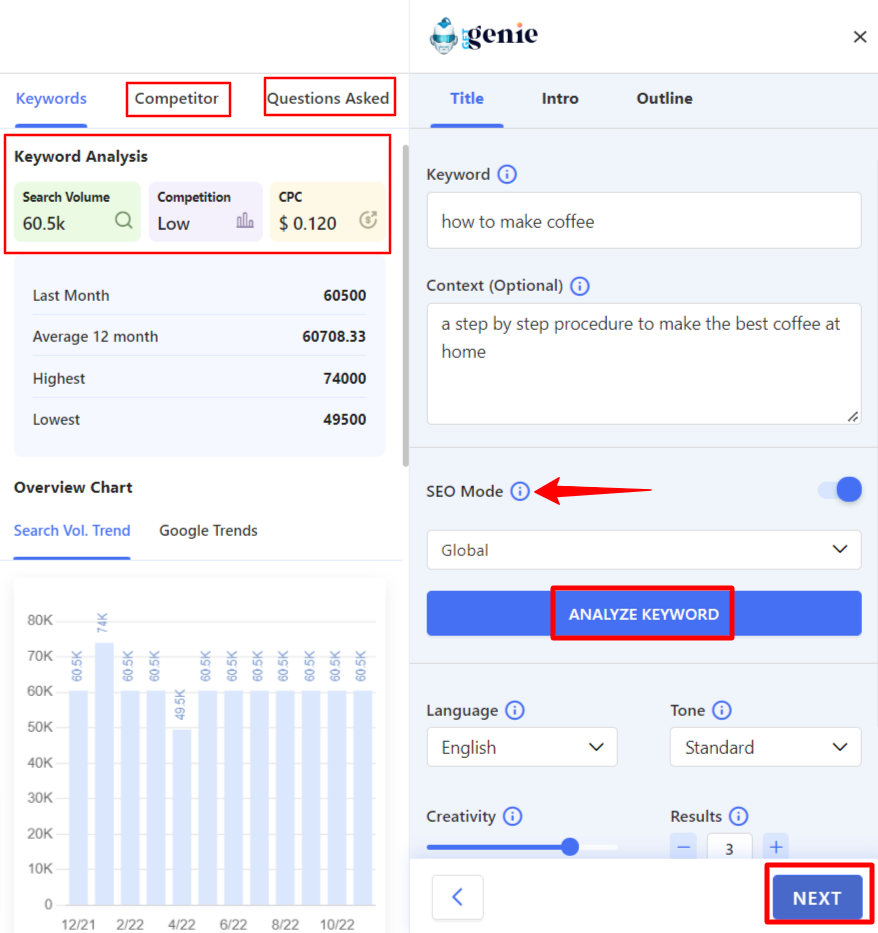
Now click on the Next button to move to the next step.
Step 3: Generate Title
The first tab is to generate a blog title. In the tab,
- Enter a keyword that reflects your blog topic. It can be of listicle or any other type.
- Provide a context to the keyword regarding your topic. This option is optional.
- Set the language, tone, creativity level, and the number of results to generate.
- Click on the Generate Title button. When the titles are generated, select a title.
Step 4: Intro
The next step is to generate a blog intro. In this tab,
- The first field is to enter a blog title.
- Then set the language, tone, creativity level, and a number of results to generate like the previous step.
- Click on the Generate Intro button.
- Now select an intro from the output results.
Then click on the Next button.
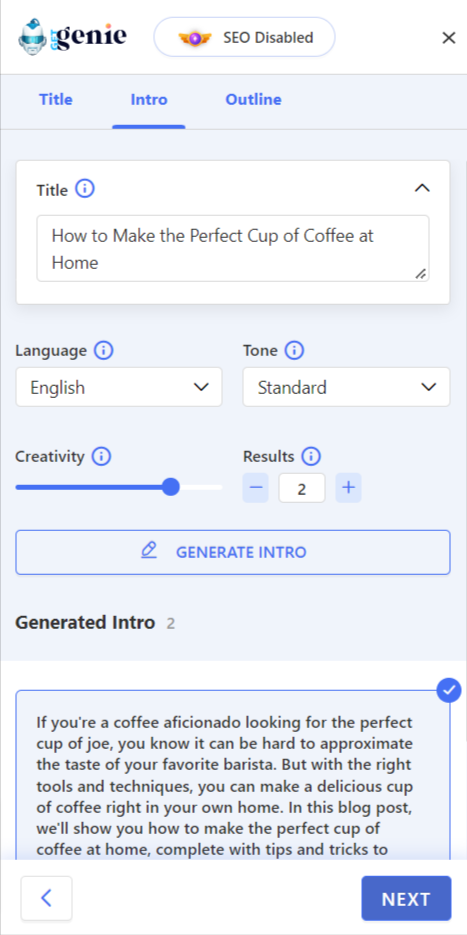
Step 5: Outline
After that, you can get a blog outline for the title and intro that were generated previously. You can create a customized outline by selecting the heading.
Finally click on the INSERT button to add the title, intro, and outline to the blog post.
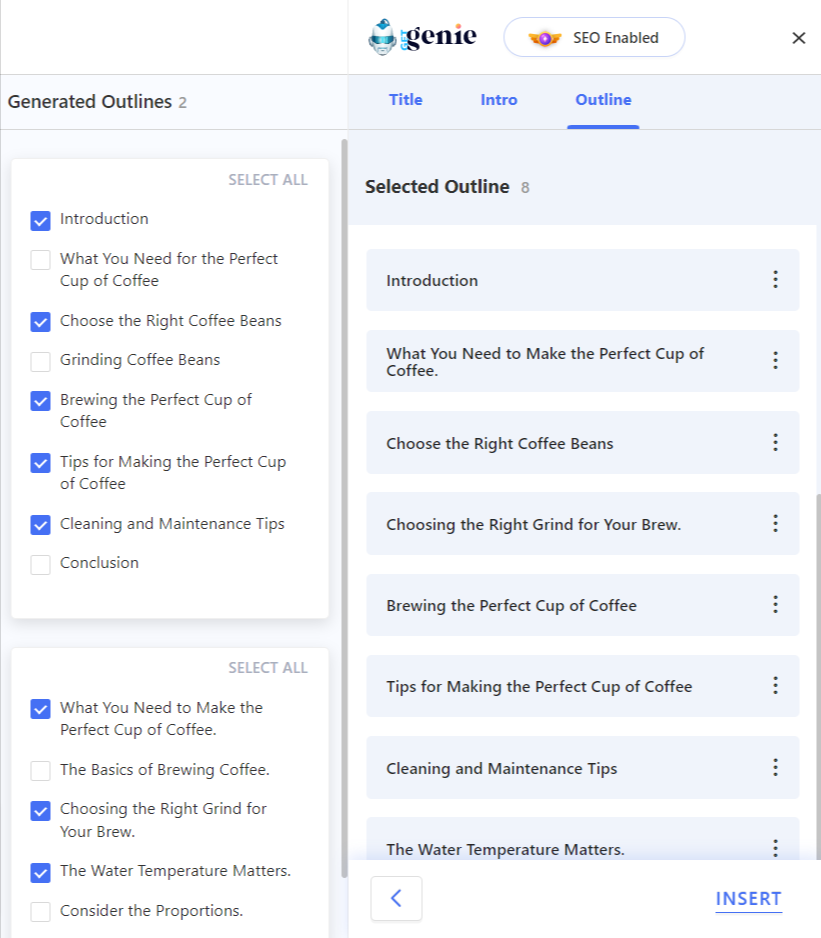
Step 6: Expand the outline and continue writing
Now you can expand the outline by adding content under each heading. To add content, select a heading and click on the GetGenie icon > Expand outline. With that,
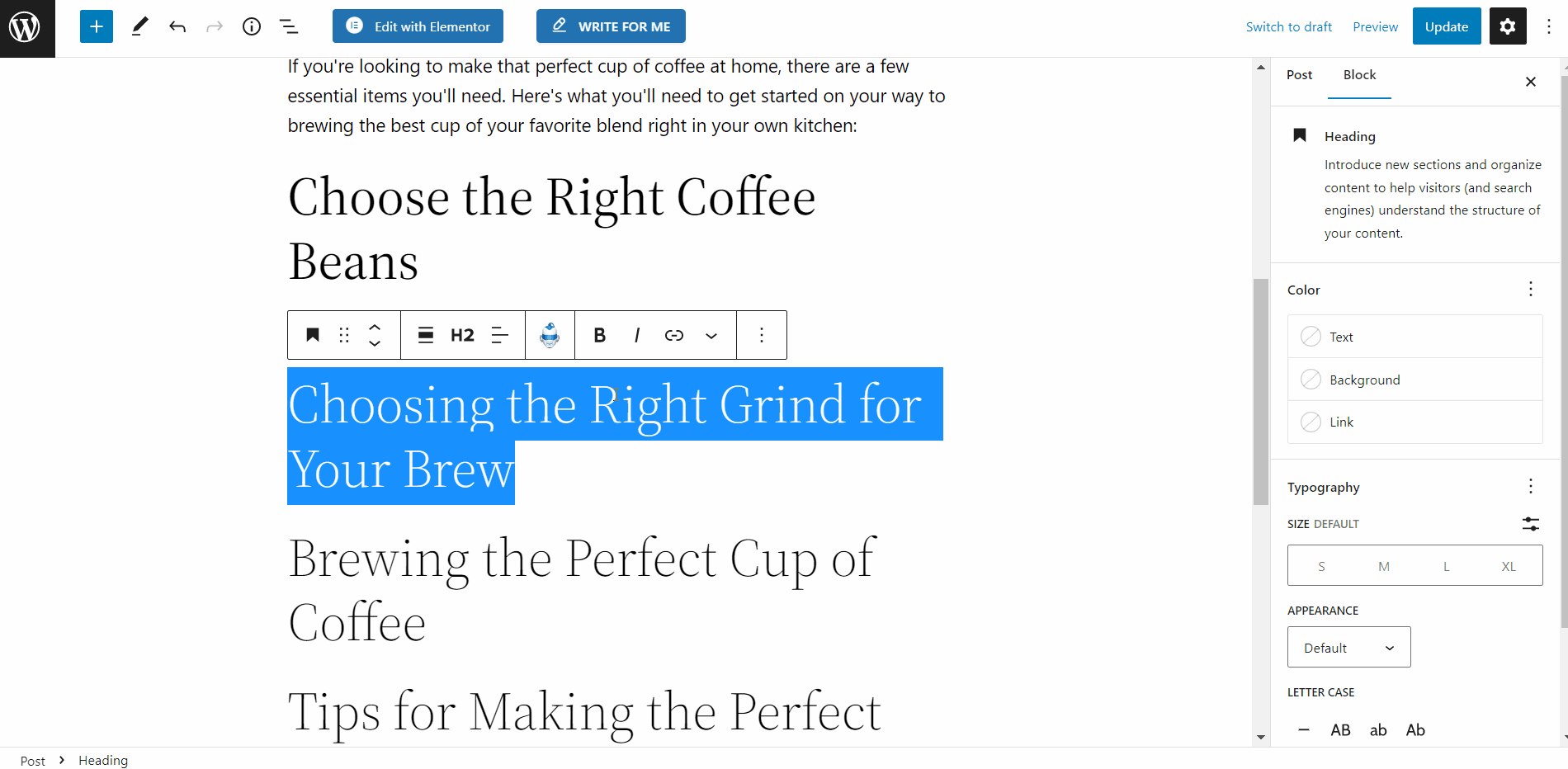
Boost content SEO
GetGenie AI is a content and SEO assistant that generates content with SEO support. In the blog, the post will see the SEO score on the top of your blog which measures the SEO optimization of your blog.
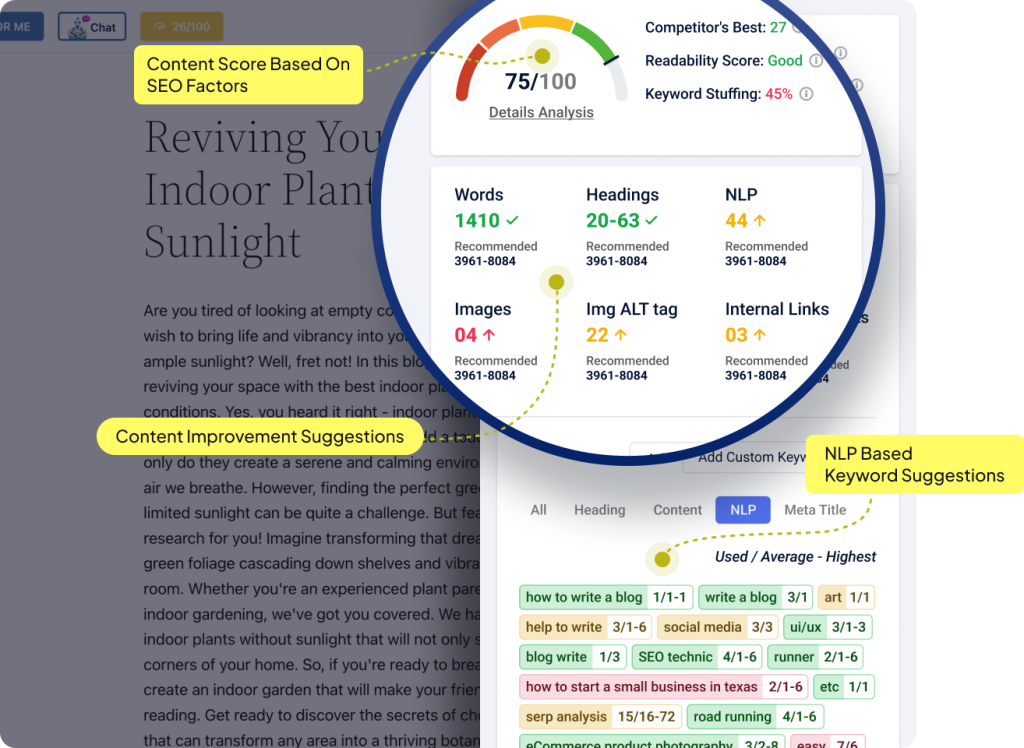
When you click on the score, you will see the SEO report for your blog. GetGenie AI provides a content score based on the number of words, paragraphs, headings, and images used in the content. The AI content and SEO assistant provides keyword optimization reports as well.
Title Idea and Feature Snippet
You can optimize your web pages for SERP using the Feature Snippet template and Title Ideas template.
Title Ideas:
Get multiple title ideas on a topic that generate titles that improve CTR using the Title Ideas template.
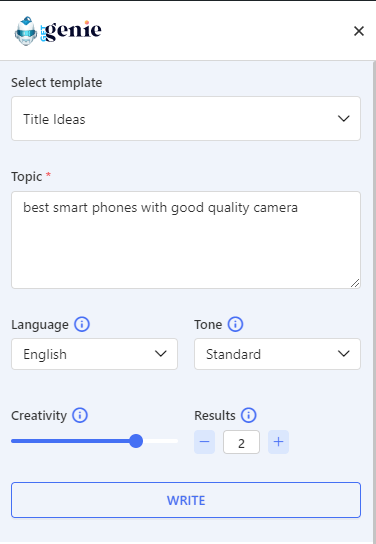

Feature Snippet:
Provide a one-liner input and GetGenie AI generates a detailed numbered list that helps to get featured in the SERP snippet.
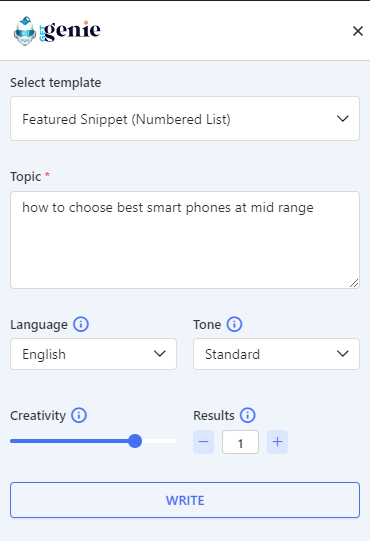
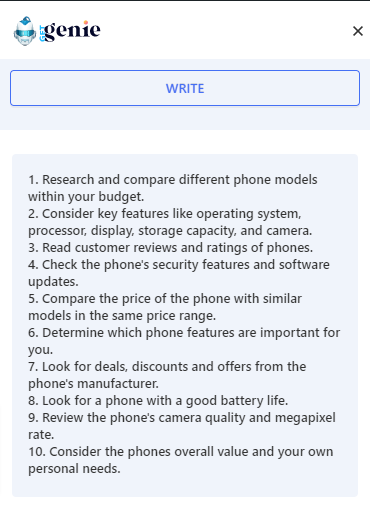
Write the Next Sentence and Next Paragraph with the GPT-3 AI text generator
GetGenie AI uses language models of GPT-3 in WordPress to predict the next sentence for the given sentence.
Similarly, it generates a sequence of sentences for the given paragraph as input.
Generate content in the listicle format with clarity
The AI content tool has a template for listicle content which you can use to generate high-quality listicle content with ease and rank in SERP.
Generate Q/A, summary bullets, and featured benefits
GetGenie AI has templates that generate question-answers, summary bullets, and featured benefits for the given input. Here is how to use those templates:
List of Questions:
For a given input topic GetGenie AI provides a list of questions that are relevant to that topic.
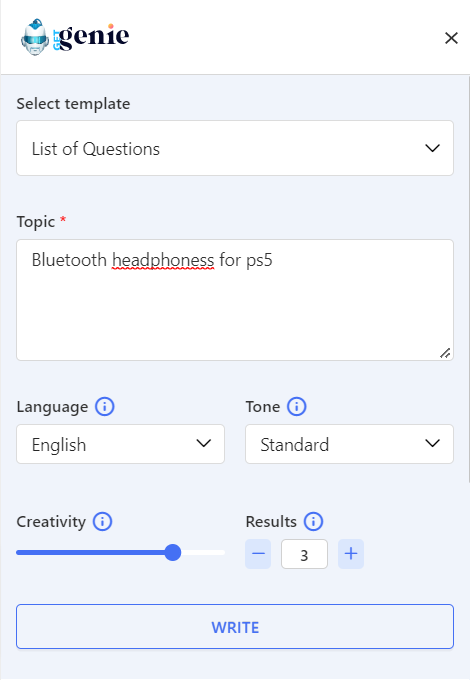
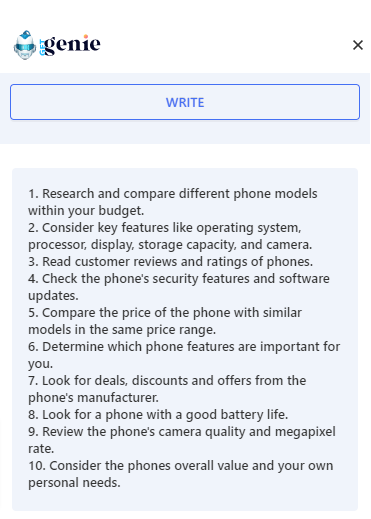
Summary Bullets:
Present vital points of a paragraph using the summary bullets template. Enter a paragraph as input and get the bullet list that summarizes the topic in the same tone and context.
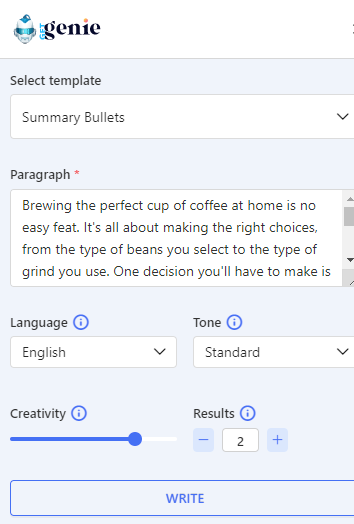
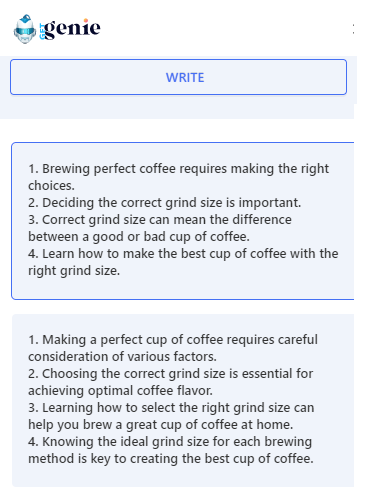
Short Answer:
For a given question, GetGenie predicts the best possible answers(s) using OpenAI’s GPT-3 language model.
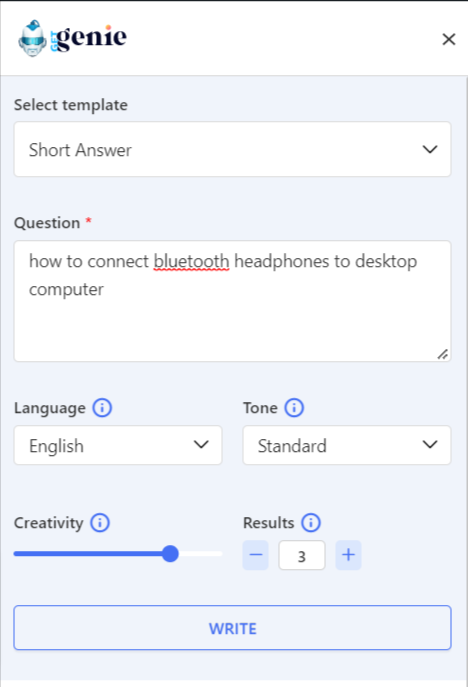

Content for WooCommerce store
GetGenie AI comes with a WooCommerce Wizard that generates conversion-friendly and SEO-optimized content for the product pages of your WooCommerce store.
Besides, GetGenie AI also has a bunch of individual templates for WooCommerce products. They are:
- Product Ad Copy
- Product Description
- WooCommerce Product Title
- WooCommerce Product Long Description
- WooCommerce Product Short Description
Putting all things together, you can try GetGenie AI content and SEO assistant to utilize the full potential of GPT-3 in WordPress.
How to get the most out of GPT-3 AI text generator
GPT -3-based writing assistants like GetGenie AI provide quite efficient output. However, there are still scopes to humanize AI-generated content to maximize output quality.
- Provide a clear brief: GPT-3 language models predict the output based on the given input. Therefore, you must provide a clear brief of your content so that the text generator can predict the output right.
- Set the tone of the content: Tell the tone of the content to the GPT-3 AI text generator.
- Keep the consistency intact: The biggest challenge of AI content generators is to maintain consistency. Therefore you need to ensure that the content generated by GPT-3 in WordPress must be consistent.
- Generate an outline first: For long-form content, you should generate an outline before you start writing the blog. You can generate content outlines with AI and edit them as well.
- Check the authenticity of the information: Information, particularly stats in AI-generated content may not be accurate all the time. So, you must check the information manually.
Finally, add a human touch to it. Despite the development of advanced language models like GPT-3, AI content generators still can’t provide 100% human-like content. Therefore, the best way is to use AI as a writing assistant where you as a human add your input and make it more catchy in terms of human emotions.

